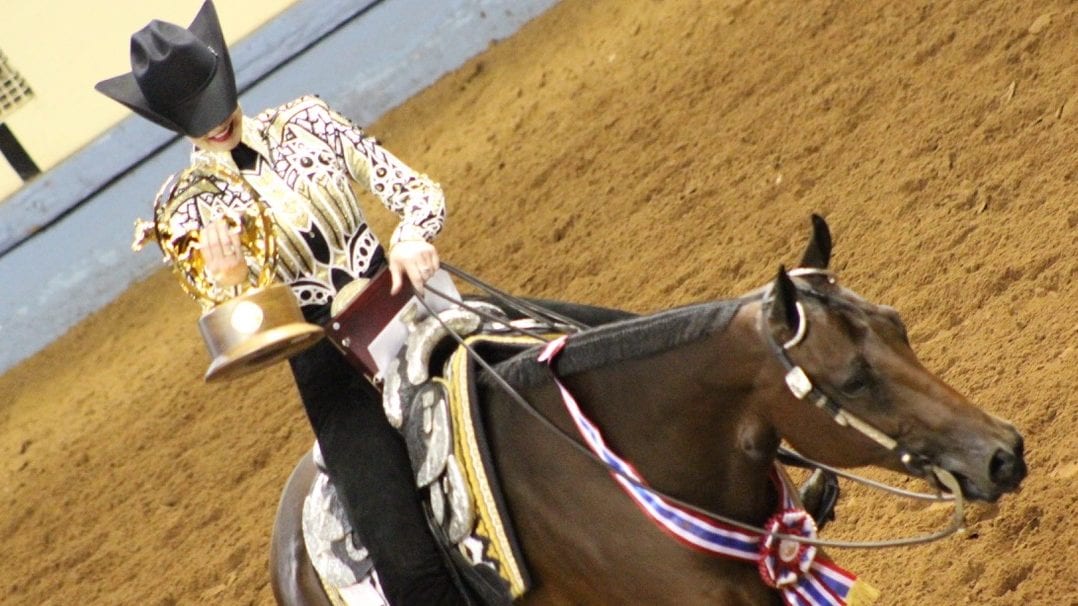It is that bittersweet time of year again. The last points were gathered, the last congratulations passed around, and new and old champions alike are being crowned. Another year has passed too quickly. 2016 has come to a close.
The New Year and show season are upon us. Some began on January 2, 2017. Some will not for a few months later. No matter when your season starts, there are some things you should keep in mind as you begin a new journey.
1. Apply what you learned in 2016
 As you move into 2017, it is important to accept 2016 for what it was, good or bad. There were probably moments of both. It is common to want to forget everything that went wrong and move on to a fresh start. You’re right, a new year is the perfect chance to reboot and restart. But it doesn’t mean you should leave everything in 2016.
As you move into 2017, it is important to accept 2016 for what it was, good or bad. There were probably moments of both. It is common to want to forget everything that went wrong and move on to a fresh start. You’re right, a new year is the perfect chance to reboot and restart. But it doesn’t mean you should leave everything in 2016.
Every hardship, or mistake that came in the past year carries a lesson. These lessons, if treated as such, can be the building blocks that sets the stage for 2017. Mistakes are okay. They happen. We are engaged in a sport that requires us to not only control ourselves, but work with a 1000 pound plus animal. If it was perfect all the time, our competitive nature wouldn’t be satisfied. Learning to prevent the same mistakes from happening repeatedly is a good goal to have, which requires you to bring them with you into 2017 to learn from, not to dwell on.
2. Practice the way you will show
 Showing horses can be very situational. Every arena is different, as is every pattern and ride. Each of these factors can affect you and your horse’s performance. Perfecting the things that you can control can help counter the unpredictable situations. Using show equipment on occasion, or before an event is a great way to ensure that you are prepared. Practicing in your hunt seat saddle and boots is a prime example. Leg use and position is different in a hunt seat saddle, which can affect the way you ride and how your horse responds. Western show saddles can also be different from work saddles depending on the brand. This can also change seat position. Schooling bits that differ from show bits can also change the way your horse responds to your hand movement, which in turn changes the way you have to use your hand and leg as combination cues. Putting yourself in these situations at home can take stress and time off of your work at shows. Practice like you are going to show.
Showing horses can be very situational. Every arena is different, as is every pattern and ride. Each of these factors can affect you and your horse’s performance. Perfecting the things that you can control can help counter the unpredictable situations. Using show equipment on occasion, or before an event is a great way to ensure that you are prepared. Practicing in your hunt seat saddle and boots is a prime example. Leg use and position is different in a hunt seat saddle, which can affect the way you ride and how your horse responds. Western show saddles can also be different from work saddles depending on the brand. This can also change seat position. Schooling bits that differ from show bits can also change the way your horse responds to your hand movement, which in turn changes the way you have to use your hand and leg as combination cues. Putting yourself in these situations at home can take stress and time off of your work at shows. Practice like you are going to show.
3. Challenge yourself at home
 It is very common for horse shows to offer patterns weeks in advance, but that doesn’t mean those are the only ones you should practice. Putting together, or finding, high difficulty patterns are a smart way to prepare yourself for anything you might encounter at a show. Doing this can make weekend horse show patterns seem easier. It also makes the patterns you might encounter at a higher end show such as Congress, or World Show less intimidating. You will be ready for anything that gets thrown your way.
It is very common for horse shows to offer patterns weeks in advance, but that doesn’t mean those are the only ones you should practice. Putting together, or finding, high difficulty patterns are a smart way to prepare yourself for anything you might encounter at a show. Doing this can make weekend horse show patterns seem easier. It also makes the patterns you might encounter at a higher end show such as Congress, or World Show less intimidating. You will be ready for anything that gets thrown your way.
This idea can go for rail classes as well. Even though you go through the same gates, there are things you can school at home. Most of them have to do with communication between you and your horse. Aside from movement, smooth transitions can separate you very quickly in rail classes. If a horse does not collect and drop into the bridle before moving into another gate, or establish a balanced cadence immediately it can make them appear less broke. This can hurt the overall appearance. Even if a horse is the best mover in the class, a horse that is consistent may be put in front of them. Putting yourself in show situations at home can make the actual show experience effortless.
A problem that many of us have faced is managing our mental state in the ring. Whether it’s a rail or pattern class, being able to slow down and think about the ride stride by stride is critical. The same goes for the elements of a pattern. As you move through a ride, you should be thinking about what is happening NOW, not something that you are worried about in another part of the ride. This does not mean that you cannot plan ahead, but distracting yourself can cause you to not take your time. Think about what you need to do to effectively complete a maneuver before moving onto the next. This idea used in combination with challenging yourself at home can make transitions through a ride appear seamless.
5. Do what you know
 This is exactly what it sounds like. This simple piece of advice has gotten me through some of the most difficult and stressful shows. It’s Michelle McCarthy Warda’s, my mom and trainer, signature line. We can only do what we are capable of doing at a given time, so do it to the best of your ability. Worrying about other people and their horses does not change you. Learning to focus on yourself and your horse can help de-stress situations.
This is exactly what it sounds like. This simple piece of advice has gotten me through some of the most difficult and stressful shows. It’s Michelle McCarthy Warda’s, my mom and trainer, signature line. We can only do what we are capable of doing at a given time, so do it to the best of your ability. Worrying about other people and their horses does not change you. Learning to focus on yourself and your horse can help de-stress situations.
Show the same way you ride at home- it’s what you know; it’s what your horse knows. Changing it up at a show will only add confusion.
Setting goals for the year is a must. By doing so you show understanding of what you want to accomplish on an individual and team level. Short term goals provide you with checkpoints throughout the season to keep you motivated, and on track. Setting large, year-end goals also help envision your season. Sticking to goals takes discipline, but it is the best way to hold yourself accountable for the work you have or haven’t done. Reevaluating goals at your checkpoints is okay too. Not everything is going to work out the way you plan, but each checkpoint gives you a chance to evaluate and adjust.
Everyone has things they need to work on, which is part of the reason for setting goals. The next step is ordering those goals from highest to lowest priority. The things that could affect you the most should be at the top of the list. This might include putting a lead change on your horse, strengthening a lead, diagonals, or increasing the speed of turns or showmanship backs. Prioritize according to what your main goals are during the 2017 show season.
Many people work with a trainer. If you do, you are trusting someone with your horse and goals. Understand that the relationship between a trainer, client and horse should be a committed relationship. This explains the importance of becoming familiar with a trainer’s style, and expertise before deciding to work with them. The consistency of staying in one program for a generous period of time is good for both horse and rider. This doesn’t mean that every trainer is forever, but if you choose one that works best to fit your needs in the present time you should trust in their ability to carry you forward into the New Year.
 9. Remember the little moments
9. Remember the little moments
The horse industry thrives on the shows, classes, entries, and accomplishments. We love what we do for all of those reasons. We are competitors, and we are part of teams that work hard to succeed. These things do not define the joy of horse showing in its entirety. Too easily the fun of showing is lost in the intensity. Remember to keep the spark alive in 2017. Enjoy every class, for each one is an opportunity no matter how big of a show it is at. Ride like each time could be your last. You might just be surprised how far a little passion can take you.
To quote one of my favorite movies (The Santa Clause) post-Christmas…”Seeing isn’t believing, believing is seeing.” As cliché as it seems, I see the power in this statement.
One cannot accomplish a goal that he or she cannot envision. If you don’t think you can win, you won’t. Believing in oneself is an entire mindset in itself. Believing is the key to unlocking your full potential. It allows you to have the confidence to push past what you thought were your limits. You might just find you don’t have any. Start every class in 2017 with, “I can do this.”
Good luck to all exhibitors in 2017. We wish you happiness, success, luck, and safety this season.













